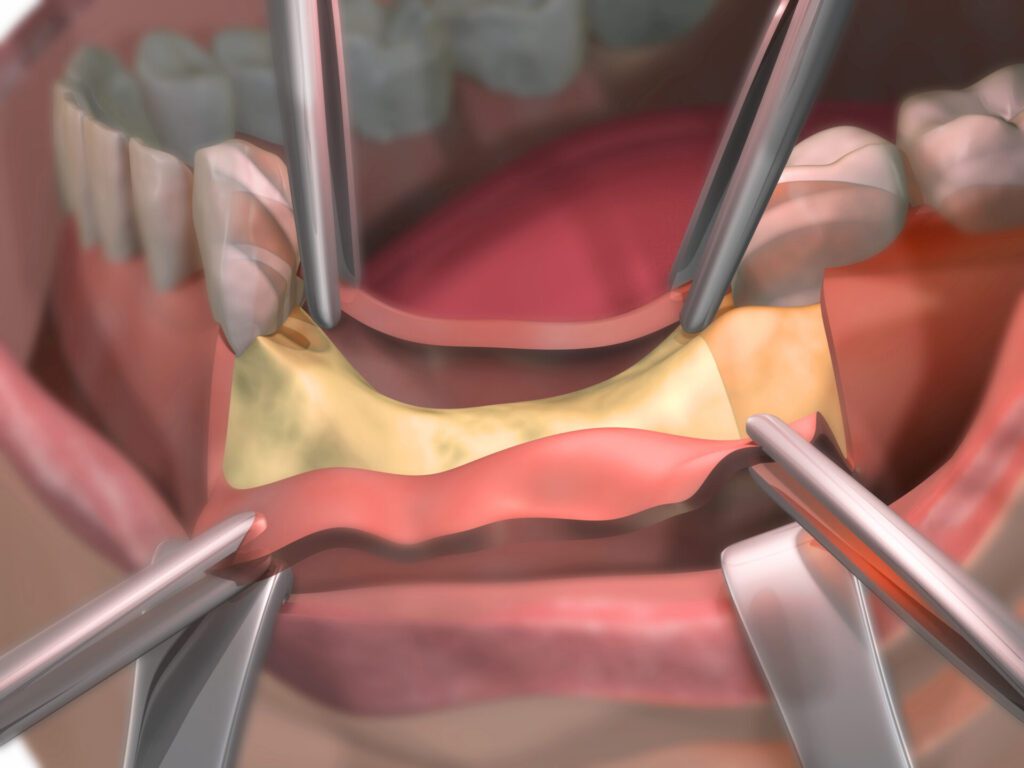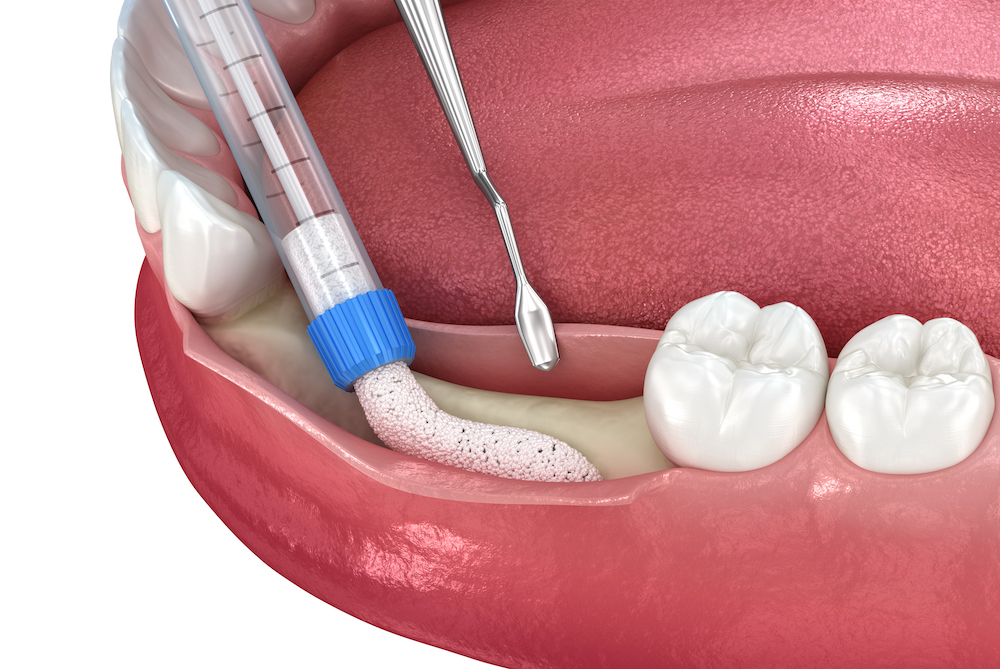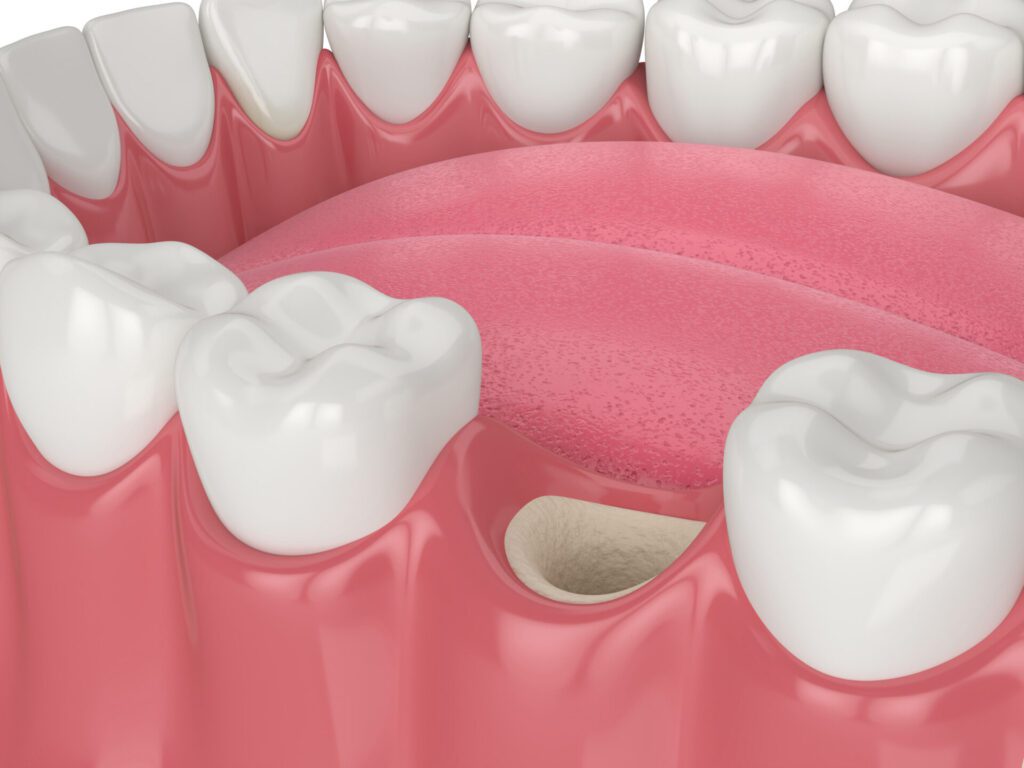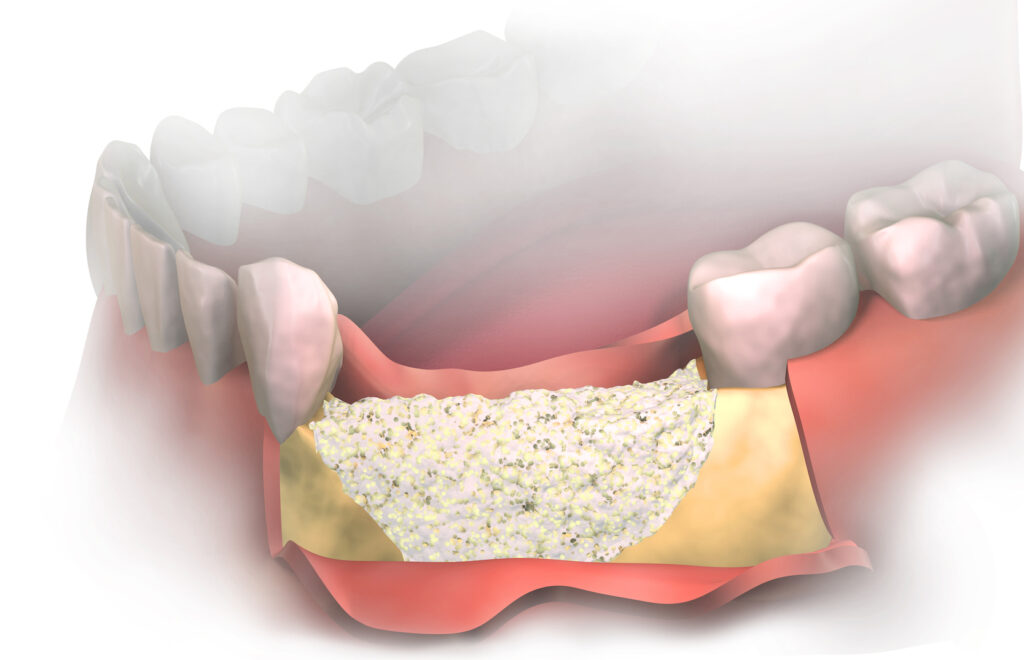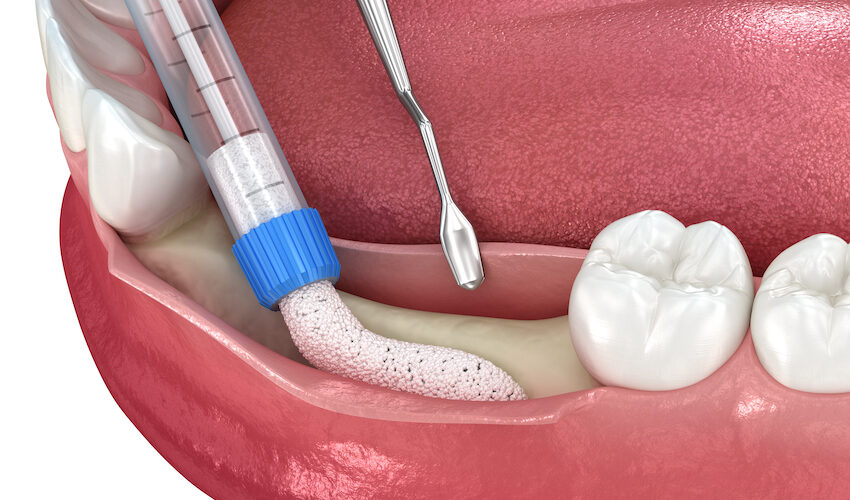Considering dental implants? Know your options for bone, tissue grafting
Nov. 20, 2023
This paid piece is sponsored by Siouxland Oral & Maxillofacial Surgery
Many people who are missing a tooth can have that tooth replaced by a “bridge,” a partial denture or a dental implant. Some people also choose not to replace the missing tooth. All are varied treatment options with their own risks and benefits.
Your dentist will go through your options, and if you decide that a dental implant is what you want as a replacement, then you typically are referred to an oral surgeon because the placement of dental implants is truly a surgery. Your surgeon will go through the different dental implant options, as well as any options you have for bone and soft tissue grafting if you in fact need them.
Bone loss after tooth removal with opened gums before surgery
It’s important to remember that oftentimes dental implants can be placed without bone or soft tissue grafting. Some dental implant surgeries, however, require the help of these advanced techniques.
Let’s look at bone grafting. There are synthetic grafting options, bioactive glass, coral, cow bone, pig bone, human bone, plaster, bone growth factors either synthetic or derived from your own blood, and others. Depending on the particular case and the requirements, different grafting options will be selected and discussed with your oral surgeon.
Bone grafting augmentation for tooth implantation — medically accurate 3D illustration
One interesting type of grafting option is called a “ridge split bone graft” where wedges of sequentially larger sizes are used to stretch the bone to make it wide enough to accept a dental implant. One advantages of this graft type is that the dental implant can be placed at the same time as the graft.
A socket ready for a bone graft to be placed.
Another option that is related to a ridge split is called a “bookend graft” where the bone on one side of where the implant eventually will go is separated from the underlying bone while still being attached to the soft tissue. This unit is then physically moved laterally, with the resulting space grafted with other bone grafting productions.
Likewise, a lesser-known technique is called a “shell graft” and can be used when there is a tooth to be extracted first and then the implant placed. The shell graft is used when a surgeon extracts a tooth but intentionally leaves a thin shell of tooth structure attached to the bone. This preserves the bone lateral to the implant and preserves the contour of the bone. Many times, the implant can be placed concurrently, as well as additional bone grafting.
Adding new bone to bone loss on lower jaw after tooth removal. Bone grafting placement in front view. Before putting membrane on bone graft.
You might ask why all these different techniques, as well as many others, are available? The answer is that, as oral surgeons, we want to be able to place the dental implants in good solid bone but also provide a bone grafted area that looks as close as possible to the natural form of the area before the tooth was extracted.
One of the problems implants face, especially in the area of the upper front teeth is resorption of the bone on the lip side of the implants. This process is called buccal bone resorption. This happens in a lot of cases; there is some “die-back” of the bone and unwanted flattening of that area of the tissue.
Usually, it is of no consequence, but in some people, there is noticeable thinning. The light that hits the gingival tissue does in fact penetrate the tissue, and if there is white bone underneath, then you will get the typical light pink of gingival tissue around the teeth and implant. If the bone dies back however, then the gray of the dental implant is under the gingival tissue, and as the light goes through the gingival tissue, it showcases this gray area. Instead of the desired white “color” of bone, the reflectance is not as cosmetic, thus resulting in a darker color of the gingival tissue. Usually, this is subtle, but in uncommon cases it’s unfortunately noticeable, and some soft tissue grafting is needed.
Therefore, as oral surgeons, we would like to have thick bone around the implant so the chance of this darkening is small. We do this by utilizing different bone and soft tissue grafting techniques where indicated.
Furthermore, we also use dental implants of different cross-sectional geometries. One geometry is called a round ovoid — that is like a circle but with three slightly flattened sides — rather than a perfectly round diameter implant. This gives about an extra millimeter of bone thickness to the lip, or buccal, side of the implant, which decreases the chance of this pesky darkening effect of the gingival tissue.
Talk to your board-certified oral surgeon about the different procedures that they can do to help mitigate this problem if you indeed have it.
Until next time!
Siouxland Oral Surgery, Oral Surgery by Oral Surgeons


